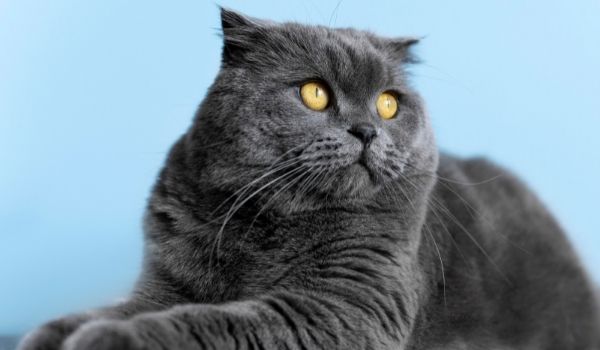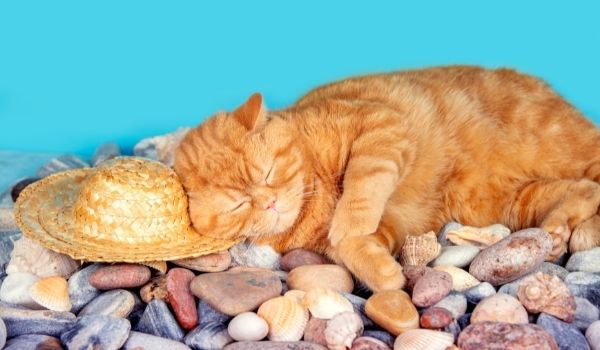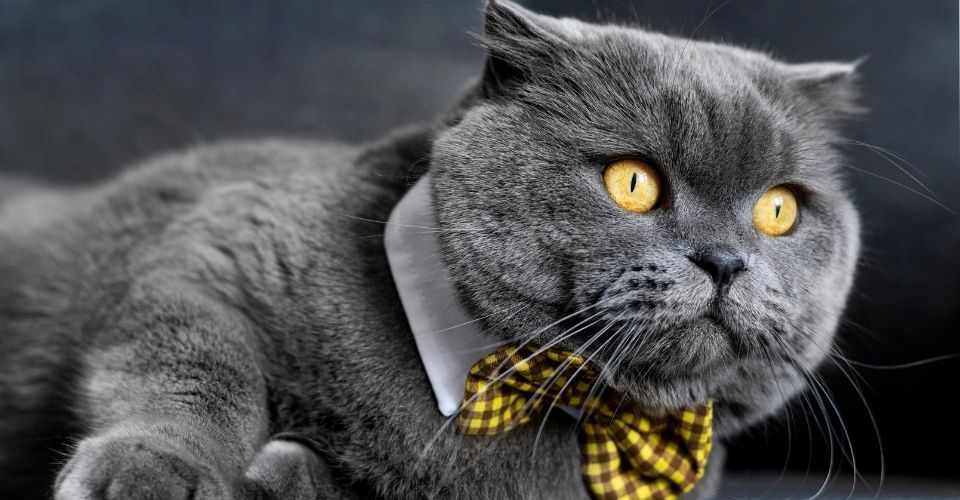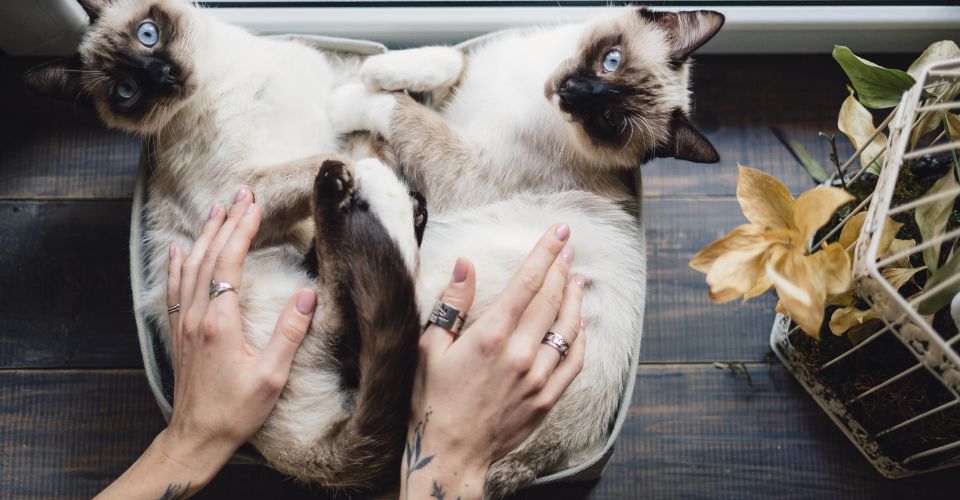British Shorthair is one of the best cats you can have as a pet. British Shorthairs are loyal to their owners and super friendly. The best thing about them is that while they enjoy the company of their owners, they are not lap babies and won’t always be begging for you to pick them up or give them belly rubs.
Are you thinking of getting a British Shorthair cat? But before you do that, you want to make sure that it would be a perfect fit for you. Keep reading to learn all about British Shorthair cats and then decide if it would make a good for you or not.
British Shorthair Breed Overview
British Shorthair Breed Overview
Origin:Britain
Weight: 7 to 17 pounds
Lifespan: 15 to 20 years
Coat Color: Many including white, black, red, brown, cream
Temperament: Laid-back, sociable, affectionate
Suitable for: Working parents, families with children, first-time pet owners, multi-pet households
Round is the keyword describing British Shorthair cats—many of their body parts are round. They have big round eyes and are often listed as a cat breed with big eyes. They also have round ears on a big round face and rounded paws. Even you can notice that her tail also has a round tip.
British Shorthair is also called British blue, as it came only in blue color in the beginning. But now, their coats have various colors. There is another kind known as British Longhair, similar to British Shorthair but has a long hair coat.
Read: Orange Tabby Cat Facts
British Shorthairs are friendly, intelligent, and dignified partners. They don’t want to be on your lap all the time, but at the same time, they prefer to be near their keepers. The best thing is they are calm around children and dogs and easily get along with strangers as well.
You should keep an eye on your British Shorthair cat’s caloric intake. As this cat breed is prone to overeating, she may gain extra weight, grow obese and develop health-related issues. You should follow a proper diet and encourage her to exercise more often.
British shorthair is ideal for any home as they are loyal to their owners. That said, they make a perfect pet for first-time cat owners. But not a great choice for cat lovers who are looking for a lap cat. Try to keep your British shorthair at home as much as you can to protect her from diseases and accidents.

British Shorthair History
According to The Governing Council of the Cat Fancy, British Shorthairs are the direct ancestors of the cats introduced in England by the Romans. Street and farm cats subsequently spread throughout the nation when utilized for pest control. People began to open their doors and hearts to them due to their peaceful temperaments.
A cat breeder called Harrison Weir started the formal development of the British Shorthairs in the late 1800s by crossing them with several individual cats. Weir’s blue-tabby British shorthair won Best in Exhibition at London’s Crystal Palace’s first organized cat show in 1871.
During World War I, Persian, Russian blue, French Chartreux, and Domestic Shorthair cats were introduced into the mix, and the British shorthair we recognize today was developed. In the 1970s, British shorthair was identified and adored around the globe.
British Shorthair Personality and Temperament
British Shorthair cats are calm and easygoing. Generally, males tend to be larger and more energetic than their female partners. They love their owners but don’t like to sit in their laps or be carried around. That said, they want to be right near to their people or in the same room as them. You can expect them to keep themselves occupied while you’re away.
This is a lazy cat. Rather than on top of the fridge, you’ll find your British Shorthair cat firmly planted on the ground. They are like a clever kid who’ll love having interactive toys to play with.
You can teach your British Shorthair cat tricks by using Clicker training. You should also provide her with puzzle toys, which reward her with kibble or treats when she plays with them, to provide them much-needed mental stimulation and make eating a fun activity.
While getting a British Shorthair, you should first check shelters, and if you don’t have any luck there, you should contact reputable breeders. Before making the purchase, you should verify the parents’ personalities by meeting with at least one of them, if not both.
British Shorthair Appearance
British Shorthair has an easygoing attitude regarding life, but apart from that, they are also famous for their thick coats. They come in a wide range of colors and patterns, but blue-gray is the most widely sought-after British Shorthair cat color. They are often grouped with grey cat breeds. British Shorthairs with blue-gray coats are also known as British Blues. Though it is quite rare, they may have a calico coat. Moreover, they may also have tabby patterns. Among tabby patterns, the orange tabby pattern is the most popular.

Besides that blue coat, you can identify this breed by its broad chest, chubby cheeks, round heads, and thick legs. The cats of this breed have bold orange-amber eyes, but those with other coat colors can have green, copper, amber, or blue eyes.
British Shorthair Grooming
Talking about the grooming requirements of the British Shorthair breed, they don’t need much.
However, if you do weekly brushing, it’s enough for winters. However, in spring and autumn, as they shed more, you should brush their coat daily to remove dead hair.
You should trim your cat nails every week; it’s a must thing. By keeping their nails trimmed, they will not harm you and damage furniture; moreover, if their nails are caught in furniture or anything else, they might break and cause them pain. There is an option of clipping your cat’s nails from starting days when they are a kitten; in this way, they will be used to it.
Inspect their ears once a week to ensure they don’t have a feline ear infection. But if there is redness, any discharge, or a weird smell, these are signs of infection. To prevent the infection, you should clean them by using a cleanser and cotton ball.
To avoid any eye discharge, use a wet, soft cloth to wipe the eyelids. Use a different piece of material for each eye so that you don’t spread any germs or a cat eye infection from one eye to the other.
Lastly, brush your cat’s teeth regularly to prevent gum disease and tartar buildup.
British Shorthair Diet
The British Shorthair needs high-quality cat food with lots of fresh meat and nutritious proteins. You can try special cat food that is made specifically for British Shorthair cats. The unique kibble size and shape of British Shorthair cat breed specialized food makes it simpler for cats with small jaws to consume nutrients, encouraging them to chew.

|
Additional taurine and cartilage nutrients like glucosamine are often included in breed-specific meals to help avoid joint problems and hypertrophic cardiomyopathy. Vitamin B and salmon oil may be introduced to your cat’s diet to maintain their coats shiny and healthy.
How Big is a British Shorthair?
British Shorthair cats weigh more than the usual cat breeds and are thus listed as a medium to large-sized cat breed. Like most cat breeds, their males are bigger in size as compared to their females. On average, their height ranges from 12 to 14 inches. Similarly, the average weight of male British Shorthairs is around 12 to 17 pounds; females, on the other hand, weigh around 9 to 15 pounds.
British Shorthair Health
British Shorthair is an overall healthy cat breed, but they are prone to several health issues such as hypertrophic cardiomyopathy (HCM), hemophilia B, and diabetes.
Hypertrophic Cardiomyopathy (HCM)
Hypertrophic cardiomyopathy (HCM) is a heart disease found in cats. There is thickening (hypertrophy) of the heart muscle in this disease. This thickening of the heart reduces the heart’s ability to pump blood and causes shortness of breath and chest pain.
Hemophilia B
It is a hereditary bleeding disorder in which the blood does not clot properly; the affected cat may suffer from excessive bleeding in case of an injury. It is caused by the lack of blood clotting factor IX. However, breeders take help from DNA tests to identify the Hemophilia B carriers and affected cats.
Diabetes
Cats with diabetes cannot produce sufficient insulin, which converts glucose (sugar) into cellular energy. Due to diabetes, you can notice increased urination, weight loss, and infections in your cat.
Dental Issues
It’s very typical to have dental problems if not taken care of properly. Periodontal (gum) disease can occur when a layer of tartar is formed, and plaque occurs when plaque begins to build up. As a result, gums become weak and leave teeth. However, regular brushing and using antibiotics can help keep dental health issues at bay.
Four Reasons Why You Should Get a British Shorthair
Below we have discussed some of the reasons that make British Shorthair cats a great pet.
Very Little Grooming Requirements
While British Shorthairs are not hypoallergenic cats, they shed very little as compared to other cat breeds and thus require minimal coat grooming. Weekly brushing is enough for your British Shorthair to maintain a healthy and shiny coat.
Great Pet for Working Parents
They can tolerate being left alone for a while. They are not affected if the owner is away for a long time, provided you have given them interesting cat toys and food puzzles to keep busy.
Don’t Shed Much
The main problem of keeping cats as pets is that they shed fur. But this British Shorthair shed significantly less hair as compared to other breeds. However, as they are seasonal shedder, during spring and fall time, you might have to brush their coat daily to prevent hair from spreading throughout the home.
Great for First-Time Owners
British Shorthair is an ideal cat breed for first-time owners as they don’t need much care or attention. They don’t even want to sit in their owners’ lap, lay on their chest, or snuggle in bed with them. That said, they love to be in the same room as their owners.
Three Reasons Why You Should Not Get a British Shorthair
Too shy
Sometimes they get too shy and try to get away from people.
Obesity
You should take care of their diet and follow a proper diet as they tend to gain weight.
They Don’t Like to Be Held
British Shorthair cats neither like to sit in their owners’ lap nor do they want to be held and carried around in the home. This doesn’t mean that they don’t love their owners—they do. But they don’t just like to be handled—they like to keep their distance. They like to be in the same room as their owners because they appreciate their company. If you move to another room, your cat might follow you there.





